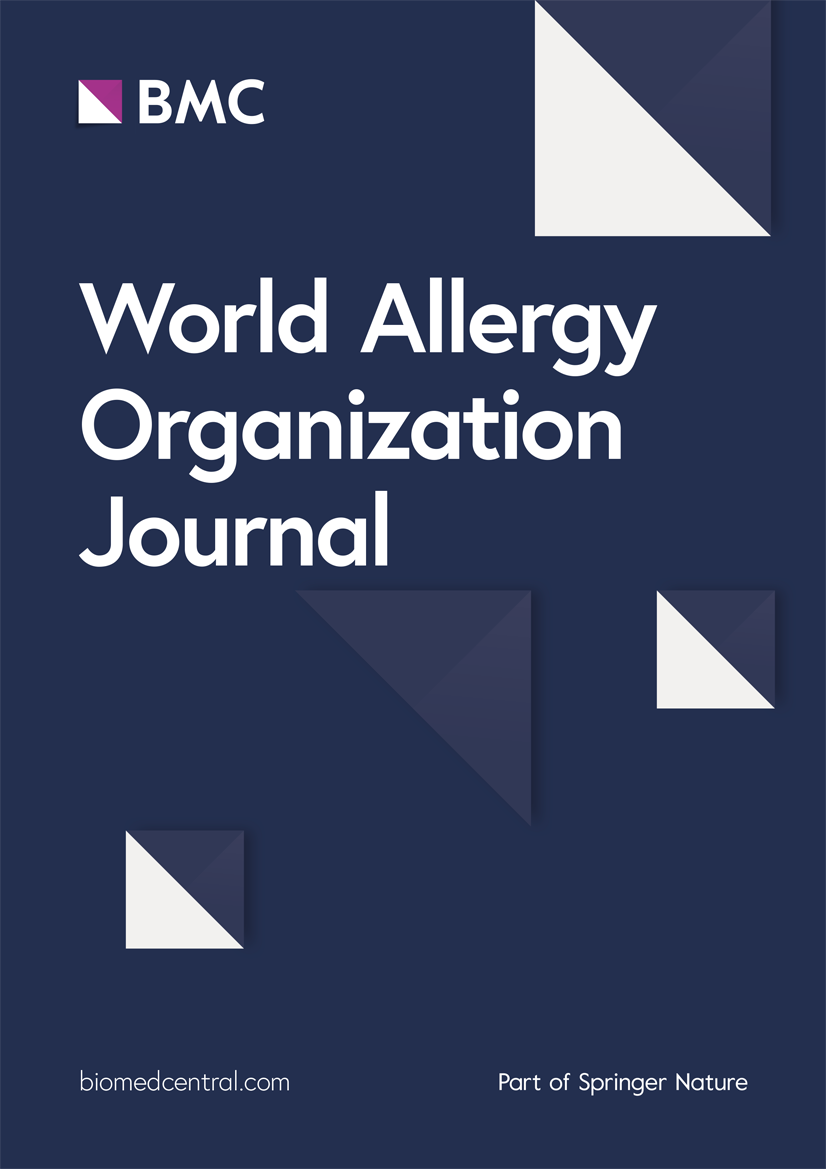Evaluating serum periostin and YKL-40 as biomarkers for airway remodeling and hyperresponsiveness in pediatric asthma
IF 3.9
2区 医学
Q2 ALLERGY
引用次数: 0
Abstract
Background
Periostin and human chitinase-3-like protein 1 (YKL-40) have been suggested to be involved in the development of airway fibrosis and remodeling. This study aimed to investigate the relationship between serum periostin levels and airway hyperresponsiveness (AHR) and between serum YKL-40 levels and AHR in children with asthma, comparing periostin as a marker for Th2 inflammation and atopy with YKL-40.
Methods
The study involved children aged 6–15 years, comprising 75 with asthma and 29 healthy controls. We measured serum periostin and YKL-40 levels and performed exercise bronchial provocation tests, methacholine challenge tests, spirometry, and FeNO measurements.
Results
Compared to the healthy controls, asthmatic children exhibited significantly elevated levels of periostin (86.7 [71.0–104.0] vs 68.3 [56.0–82.0] ng/mL; P = 0.006) and YKL-40 (29.0 [15.0–39.5] vs 27.7 [14.0–34.1] ng/mL; P = 0.034). The subgroup analysis revealed that periostin levels were significantly higher in the atopic asthma group than in the healthy controls (P = 0.003), but not in the non-atopic asthma group. YKL-40 levels were elevated in both the atopic and non-atopic asthma groups compared to healthy controls (P = 0.012 and P = 0.001, respectively). Serum periostin levels were significantly correlated with the postexerceise maximum percentage decrease in forced expiratory volume (FEV1), as well as with fractional exhaled nitric oxide (FeNO) and blood eosinophil counts, but showed no significant correlation with overall lung function. Conversely, serum YKL-40 levels were significantly linked to the Z score of FEV1 and AHR to methacholine but not with AHR to exercise or FeNO or blood eosinophil count.
Conclusions
Periostin is linked to atopic asthma and correlates with exercise-induced bronchoconstriction, FeNO, and eosinophil counts, highlighting its role in Th2 inflammation. YKL-40 is a general asthma marker, indicating airway remodeling. These findings suggest that targeting these markers can improve personalized treatment strategies for pediatric asthma.
将血清骨膜素和 YKL-40 作为小儿哮喘气道重塑和高反应性的生物标记物进行评估
背景有研究认为,骨膜素和人甲壳素酶-3样蛋白1(YKL-40)参与了气道纤维化和重塑的发展。本研究旨在探讨哮喘患儿血清骨膜素水平与气道高反应性(AHR)之间的关系,以及血清 YKL-40 水平与 AHR 之间的关系,并将骨膜素作为 Th2 炎症和特应性的标志物与 YKL-40 进行比较。我们测量了血清表皮生长因子和 YKL-40 的水平,并进行了运动支气管激发试验、甲基胆碱挑战试验、肺活量测定和 FeNO 测量。结果与健康对照组相比,哮喘患儿的骨膜素(86.7 [71.0-104.0] vs 68.3 [56.0-82.0] ng/mL;P = 0.006)和YKL-40(29.0 [15.0-39.5] vs 27.7 [14.0-34.1] ng/mL;P = 0.034)水平明显升高。亚组分析显示,特应性哮喘组的表皮生长因子水平明显高于健康对照组(P = 0.003),但非特应性哮喘组的表皮生长因子水平并不高。与健康对照组相比,特应性哮喘组和非特应性哮喘组的 YKL-40 水平都有所升高(分别为 P = 0.012 和 P = 0.001)。血清表皮生长因子水平与呼气后用力呼气容积(FEV1)的最大下降百分比、呼出一氧化氮分数(FeNO)和血液中嗜酸性粒细胞计数有显著相关性,但与总体肺功能无显著相关性。相反,血清中的 YKL-40 水平与 FEV1 的 Z 评分和对甲基胆碱的 AHR 显著相关,但与对运动的 AHR 或 FeNO 或血液中的嗜酸性粒细胞计数无关。YKL-40 是一种普通的哮喘标志物,表明气道重塑。这些研究结果表明,以这些标志物为靶标可以改善小儿哮喘的个性化治疗策略。
本文章由计算机程序翻译,如有差异,请以英文原文为准。
求助全文
约1分钟内获得全文
求助全文
来源期刊

World Allergy Organization Journal
Immunology and Microbiology-Immunology
CiteScore
9.10
自引率
5.90%
发文量
91
审稿时长
9 weeks
期刊介绍:
The official pubication of the World Allergy Organization, the World Allergy Organization Journal (WAOjournal) publishes original mechanistic, translational, and clinical research on the topics of allergy, asthma, anaphylaxis, and clincial immunology, as well as reviews, guidelines, and position papers that contribute to the improvement of patient care. WAOjournal publishes research on the growth of allergy prevalence within the scope of single countries, country comparisons, and practical global issues and regulations, or threats to the allergy specialty. The Journal invites the submissions of all authors interested in publishing on current global problems in allergy, asthma, anaphylaxis, and immunology. Of particular interest are the immunological consequences of climate change and the subsequent systematic transformations in food habits and their consequences for the allergy/immunology discipline.
 求助内容:
求助内容: 应助结果提醒方式:
应助结果提醒方式:


